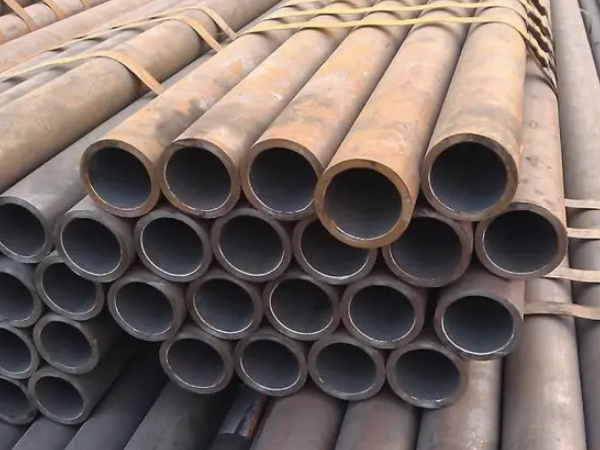The Hot-rolled Technology of Seamless Steel Pipe
Date:2022-05-17View:1876Tags:Seamless Steel Pipe, Hot-rolled Technology
The production process of seamless steel pipes can be divided into two types: cold pull-out and hot rolling. The production process of cold-rolled seamless steel pipes is generally more complicated than hot rolling.
Hot rolling (squeezing seamless steel pipe): Round tube blank → heating → perforation → three -rolling rolling, continuous rolling or squeezing → deprivation → fixed diameter (or reduction diameter) → cooling → straight → hydraulic test (or detecting) → mark → enter the warehouse
Cold drawn(rolled) seamless steel pipe: Round pipe billet → heating → piercing → beating → annealing → pickling → oiling (copper plating) → multiple cold drawing (cold rolling) → billet pipe → heat treatment → straightening → hydrostatic test (flaw detection) → mark → enter the warehouse

Hot rolling, as the name suggests, the temperature of the rolling parts is high, so the deformation resistance is small, which can achieve a large deformation. Take the rolling of the steel plate as an example. Generally, the thickness of the casting blank is about 230mm, and after rolling and refined rolling, the final thickness is 1 ~ 20mm. At the same time, due to the small ratio of the steel plate, the size and accuracy of the size are relatively low, it is not easy to occur on the plate -shaped problem, mainly to control the convexity. For organizations, it is generally achieved by controlling the cold and controlling cold, that is, the opening temperature of the refined rolling and the final rolling temperature.
The advantages and disadvantages of hot rolling:
1. Advantages
1) Hot rolling can significantly reduce energy consumption and reduce costs. During hot rolling, the metal plasticity and low deformation resistance have greatly reduced the energy consumption of metal deformation.
2) Hot rolling can improve the processing process of metal and alloy. The large grains that are about to cast are broken, significantly cracking healing, reducing or eliminating casting defects, transforming the cast state tissue into a deformation organization, and improving the processing performance of alloy.
3) Hot rolling usually uses large cast ingots, which not only improves production efficiency, but also creates conditions for improving rolling speed and achieving continuous and automation of rolling process.
2. Disadvantages
1) After the seamless steel pipe passes through the hot rolling, the non-metallic miscellaneous objects (mainly sulfides and oxides, and silicate) inside the steel are pressed into thin slices, and layered (mezzanine) phenomenon occurs. The performance of the stratification of the steel is greatly deteriorated along the thick direction, and the layer tears may occur during weld shrinkage. Local strain induced by welding seams often reaches several times the yield point strain, which is much larger than the strain caused by loads.
2) Residual stress caused by uneven cooling. The residual stress is the stress that the internal self-balance is balanced without external forces. The hot-rolled steel of various sections has such residual stress. The larger the size of the general steel section, the greater the residual stress. Although the residual stress is self-balanced, it still has a certain impact on the performance of the steel component under external force. Such as deformation, stability, and anti -fatigue may produce adverse effects.
3) Hot-rolled the mechanical properties required to control the seamless steel pipes very accurately, and the tissue and performance of hot-rolled products cannot be uniform. Its strength index is lower than cold -handed hardening products, but higher than completely annealing products; plastic indicators are higher than cold hardening products, while lowering the entire annealing products.
4) The thickness of the hot-rolled products is difficult to control, and the control accuracy is relatively poor. The surface of the hot-rolled products is rough than the cold-rolled products, and the RA value is generally 0.5 ~ 1.5um. Therefore, hot-rolled products are generally used as cold-rolled machining.
The delivery status of hot-rolled seamless steel pipes is generally hot-rolled state after heat treatment. The hot-rolled seamless steel pipes must be hand-made by the staff after the quality inspection. After the quality inspection, the surface must be applied to oil, and then the cold pull experiments will be performed. If the perforated diameter is too large, it is necessary to correct the correction. After straight, the transmission device is transmitted to the probe machine for exploring experiments. Finally, the label is labeled and the specifications are applied to the warehouse.

